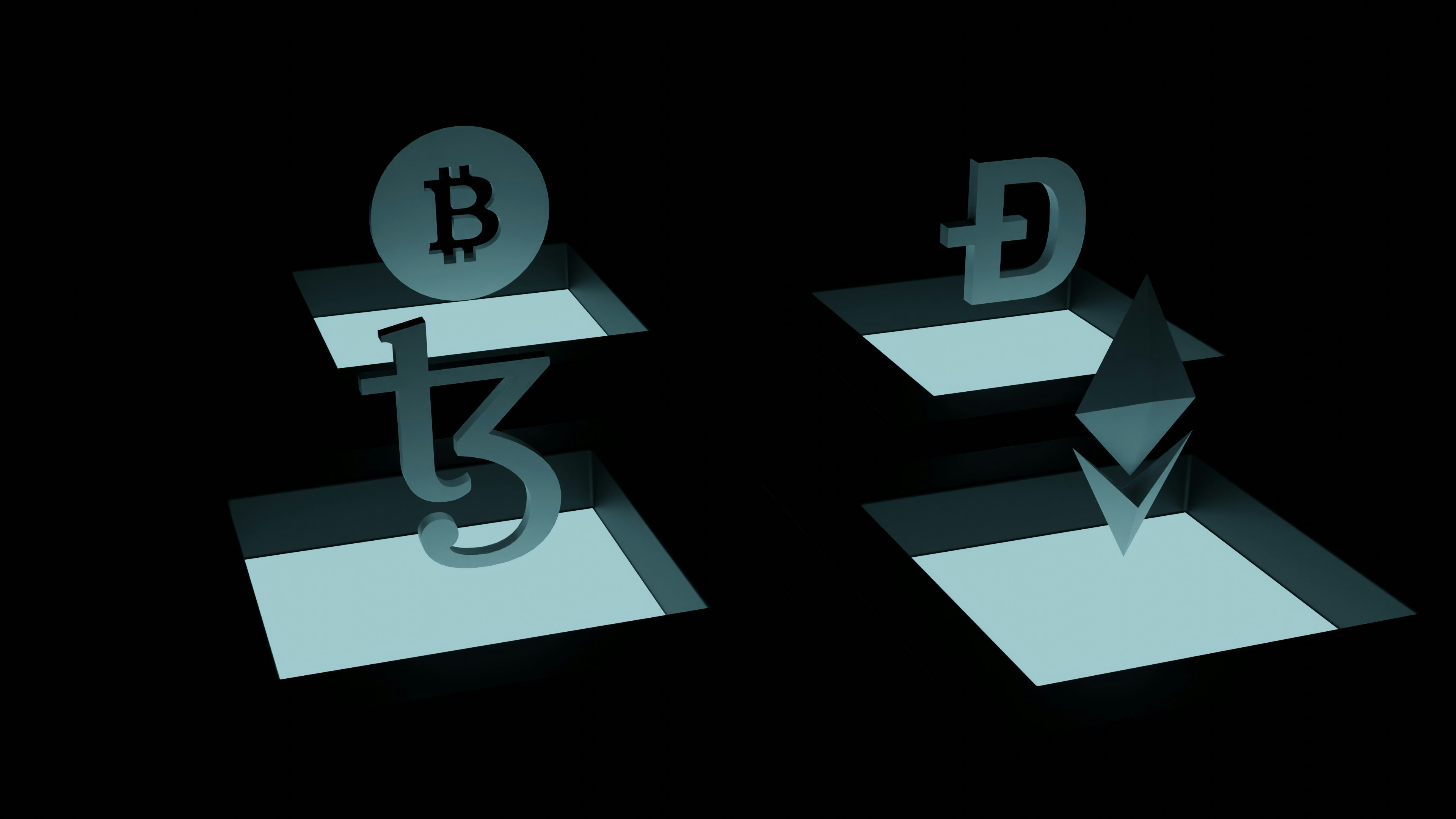INTRODUCTION
Stocks & shares has been a continual source of discussion for decades on how to get rich quick, and other investment advice, some by professional companies and others by freelancers. With the rise of blockchain and cryptocurrencies, there has been an exponential increase not only in the application and use of the technology, but also the number of people viewing cryptocurrency as a profitable means of investment.
But what exactly is it? In the technology field there is a common theme of buzzword bingo, and whilst some of the most common ones I have come across involve machine learning and artificial intelligence, blockchain and cryptocurrencies are also regularly thrown around. In this week’s blog we will break down how the technology works, the main applications of it and what the key benefits and challenges are.
Are you looking to develop a website, web or mobile application? Or looking to develop your brand image or logo design? Get in touch today at sales@digif9.co.uk to receive a completely bespoke proposal for your requirements!
BLOCKCHAIN 101
The blockchain technology is essentially a peer-to-peer ledger system that allows parties to transact between each other, without the need for a central authority. By stripping out the management ‘middle-man’ so to speak, you not only expedite the process, but you place the control in the hands of the peers, as opposed to a central authority.
For this to work, each peer carriers a copy of the ledger, which can either be a complete or partial copy, required to stay connected and functional to the network. Each transaction is completely secured with the help of advanced cryptographic algorithms to enhance security – the entire blockchain mechanism is built on these fundamentals;
- Trust: Each peer can trust the authenticity of the other peer
- Immutability: Details are immutable and so cannot be altered once created, meaning that they can’t be edited for nefarious purposes
- Transparency: Activity within the network is transparent, rather than a management middle man operating in secret
BLOCKCHAIN ARCHITECTURE
Blockchain is composed of the following three elements;
- Blocks
- Transactions
- Consensus
Blocks are stored in a linear fashion where the latest block is attached to the previous block, which all contain data, such as information about a transaction – the receiver, sender and information transferred. Blocks also contain a hash – a unique identifier to each block. This enables the block to protect its contents, as a change will affect the hash value, indicating it has been tampered with.
A transaction takes place within a network when peers send information to one another. It consists of information, similar to a transaction done on a credit or ecommerce platform, however the key difference is there is no central authority. As blockchain is a decentralised network, it needs to be updated by all of the nodes, so each node contains an exact copy of the ledger.
Consensus is the method by which a transaction is validated. Each blockchain can have a different consensus method attached to it which determines how fast, efficient, and secure a transaction is. Whilst there are a number of consensus methods out there, we will go into the four most popular.
CONSENSUS METHODS
Proof of Work (PoW)
The first method used by a blockchain network – it was introduced with Bitcoin. In this method, there are miners that are responsible for validating a transaction. The hash of a new block must be found so that it can be added to the network. The miner that finds the first one is rewarded. This method requires extreme computational power and hardware requirements.
Proof of Stake (PoS)
Used by the second generation blockchain network, Etheruem. It differs as it does not require extensive power consumption, as coins are staked by the nodes. The nodes that have more coins staked have more chances to be rewarded, so this method is investment heavy.
Delegated Proof of Stake (DPoS)
This method handles the node selection differently. The coin holders in this case, select the nodes to take part in the consensus method. They can also vote while choosing or kicking a node. It is more suited for an established network with more trust and is most often used within business models.
Practical Byzantine Fault Tolerance (PBFT)
This enables nodes to decide whether to accept or deny the submitted information. The party maintains an internal state which is used to run a computational on new messages. If the party computation runs well, it then decides to share the transaction with other parties within the same network. As not all nodes are required, it has a low has rate requirement, and is used in popular projects such as Ripple, Stellar and Hyperledger.
BLOCKCHAIN ARCHITECTURE
Now that we have explored the core components of blockchain, it is time to focus on the different types of architecture.
Public Blockchain Architecture
Here as the name suggests, anyone can participate in the network. The transaction’s public information is available to everyone, however that doesn’t mean that private data is available. Examples include Bitcoin, Litecoin and Etheruem.
Private Blockchain Architecture
The administrator or the ruling set of nodes determine how you can access the blockchain. For more information about public vs private blockchain check out the following guide.
Federated / Consortium Blockchain Architecture
The final type combines the features of both public and private blockchain with both a heavily controlled and flexible blockchain model that is best suited for enterprise blockchain.
ENTERPRISE USE CASES
Whilst all of these features sound really powerful and interesting, how exactly do they provide value to an organisation? There are hundreds of use cases in fact, but we will just highlight some of the most important examples below.
Supply Chain Management
One of the biggest issues in this space is with counterfeit products. However, using blockchain allows you to trace products accurately, removing counterfeit items. You can also increase transparency and ensure that each member of the supply chain benefits from the greater visibility.
Healthcare
One of the biggest challenges in the healthcare industry is disparate systems and multiple areas that contain the different facets of a healthcare report. In this method, patients can store their reports with blockchain, making it easier to retrieve, adding in efficiency and securing documents.
Energy Market
As a consumer in the energy market, you will be all too familiar with the idea of a central authority – the energy company that provides you with an installation and controls your power. With blockchain, nodes will become capable of generating and trading electricity without the need for this authority. Projects like Grid+ and Power Ledger are seeking to relax energy prices and increase the reach of energy in places it wasn’t previously possible.
CRYPTOCURRENCY 101
Lets start by breaking this down in half – crypto and currency. Crypto represents the cryptographic part, using complex mathematical algorithms to encrypt data, making it hard to hack. Currency is the more familiar term and represents the unit of the account. Whilst it is not the same as normal money it is a lot closer than you think.
There are multiple reasons to use cryptocurrency, including;
- Investment: As cryptocurrencies can grow in value, they is an investment opportunity
- Efficiency: They tend to be faster and cheaper than standard methods
- Privacy: Many cryptocurrencies are more private than standard currencies
- Anonymity: Some cryptocurrencies allow people to remain anonymous
- Freedom: Users are free to send and receive to each other
- True Ownership: There is no central authority in control, say a bank or Government, you have full ownership
However, it is important to be aware that not all cryptocurrencies share these features.
TYPES OF CRYPTOCURRENCIES

The most common types of cryptocurrencies are coins and tokens.
Coins
Coins represent real cash of the real world. They are the actual currency that is issued by the blockchain network. In the digital world they are just units of currency. Altcoins are any coin that is not Bitcoin – the primary and first cryptocurrency. Some examples include Ethereum (ETH), Litecoin (LTC) and Binance Coin (BNB).
Tokens
Tokens are created on smart-contract-enabled blockchains. They are not however the native currency, but instead they are representations of assets on the blockchain. They are often used for voting changes to a blockchain, as opposed to using coins themselves, securitisation through stocks and shares, and utility such as a coupon or guarantee for a product or service.
KEY CHALLENGES WITH BLOCKCHAIN & CRYPTOCURRENCY
Whilst there are many benefits that these technologies provide, they are not immune to challenges.
Public Relations Challenge
Ultimately, with any challenger or new service, there will always be a reaction from people saying what is the need? They like how things are and are comfortable with it, so a new offering creates a learning curve for them.
Furthermore, cryptocurrencies are often associated with malicious actors and criminal groups, as well as primarily in discussions surrounding ‘the dark web’. This paints a negative picture of the technology and makes people wary of fully adopting it because of this.
Existing Centralised Structures
One of the main blockers to the adoption of blockchain and cryptocurrencies are the existing central authorities. This would remove a significant amount of control from their hands, and ultimately revenue as they would not have authoritative control over their users.
Technology Maturity
The technology is still rapidly being developed and improved so there will be continual questions around factors such as user experience, scalability and interoperability – integration with existing services. There is unlikely to be full scale adoption, and more importantly migration from existing capability into new methods until they are tried and tested for several years to validate them.
Potential Repercussions
Ultimately blockchain and cryptocurrencies allow for ease of global transactions, through both information and currency. Whilst this is a fantastic benefit from a usability perspective, from a data security and financial control aspect it creates challenges. Sovereignty can become a concern, as individual countries may have issues with the global de-centralised structure, and anything involving financial currency threatens to destabilise economies will be a major concern. This makes full scale adoption a challenge.
CONCLUSION
Blockchain and cryptocurrencies have provided a number of key benefits to society and have the ability to stretch into multiple industries for them. Whilst there will always be trepidation with new services, it is important to understand the concepts, benefits, and drawbacks to make your decisions, whether it is to begin incorporating blockchain capability into business processes or invest in cryptocurrencies.
We hope that this blog post has provided a useful introduction to blockchain and cryptocurrency.
For a software development solution, get in touch today at sales@digif9.co.uk to see how we can help.





